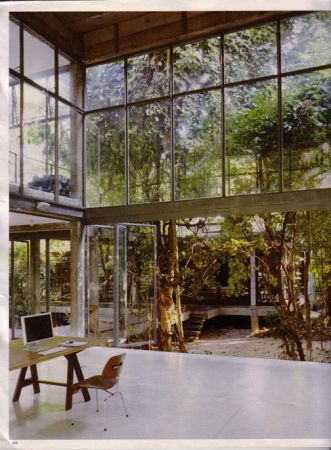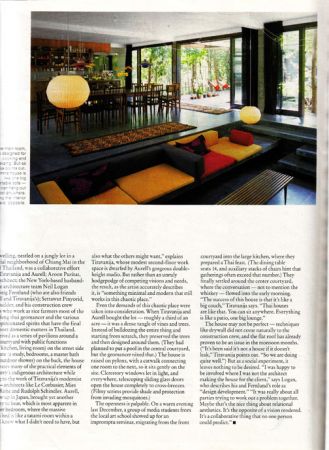~RIRKRIT TIRAVANIJA/New York Times
. . . in fact recently RIRKRIT TIRAVANiJ’S newest project – a – kind of study/work/gathering studio/house/garden in THAILAND was profiled in The New York Times Style Magazine – DESIGN SPRING 2008. Page 128.
“The Thai artist Rirkrit Tiravanija’s latest project – a house in Chiang Mai – was a group effort with singular results. Alix Browne pays a social call. PHOTOGRAPHY BY Jason Schmidt.”


the article begins: . . . “As an artist, Tiravanija is a catlyst for human interaction; his work revolves playfully around things food, music and, more often than not, architecture. In 1977 he recreated Philip Johnson’s Glass House at half-scale and installed it in the sculpture garden of the Museum of Modern Art as an art studio for children. Two years later, he created a full-scale replica of his own East Village apartment at Gaven brown’s Enterprise on West 15th Street, complete with a bedroom and a working kitchen and bathroom.. The “apartment” was open 24 hours a day to anyone who cared to stop by for a home-cooked meal, a nap or shower.
And when he recently decided to build a house for himself, his wife, the photographer Antoinette Aurell, and Aurell’s two teenage children, this too was an exercise in the value of human interaction – or what the French theorist and curator Nicolas Bourriaud has coined “relational aesthetics”. . . .
and ends with a quote from architect Neil Logan, (who describes his role in the house as “design development”): . . . “It was really about all parties trying to work out a problem together. Maybe that’s the nice thing about relational aesthetics. It’s the opposite of a vision rendered. It’s a collaborative thing that no one person could predict.”
